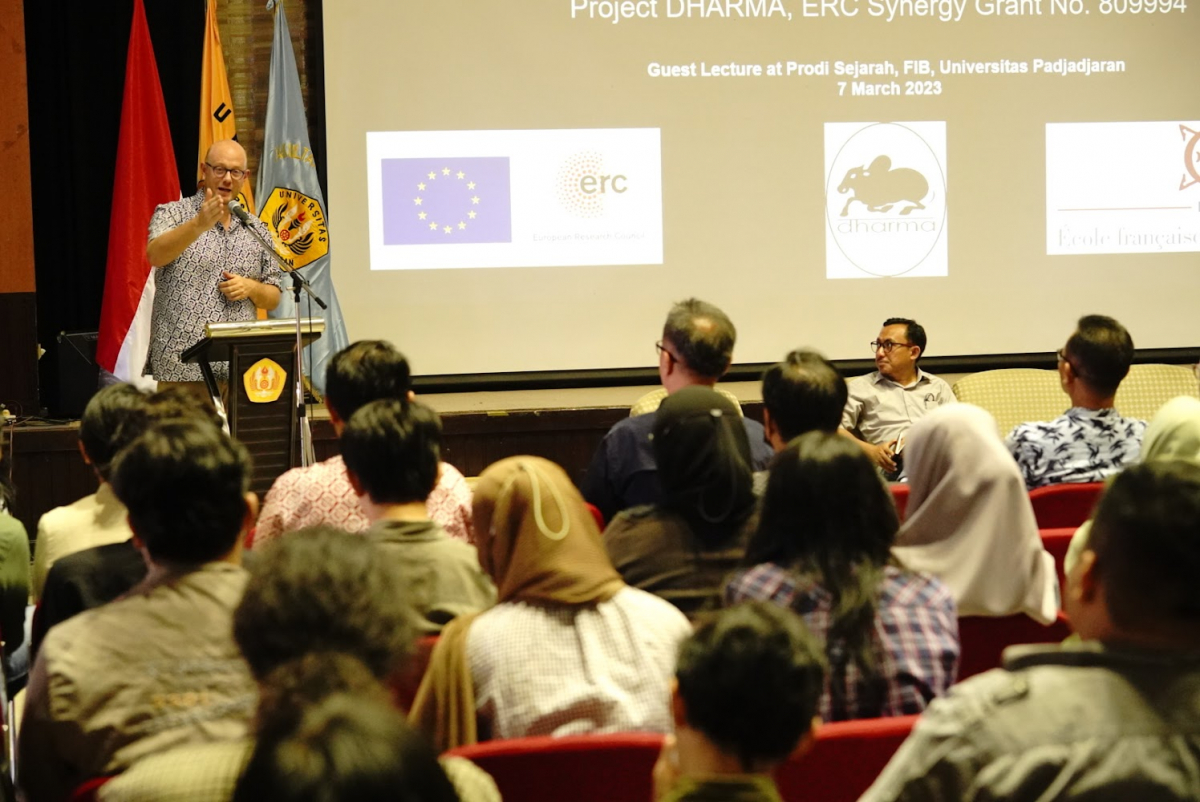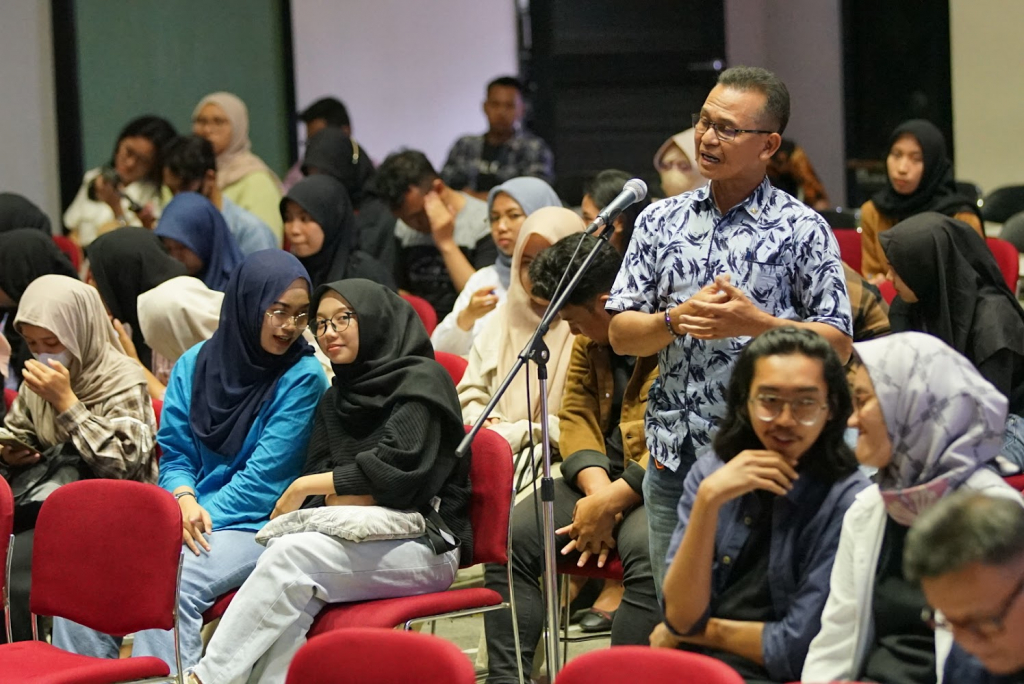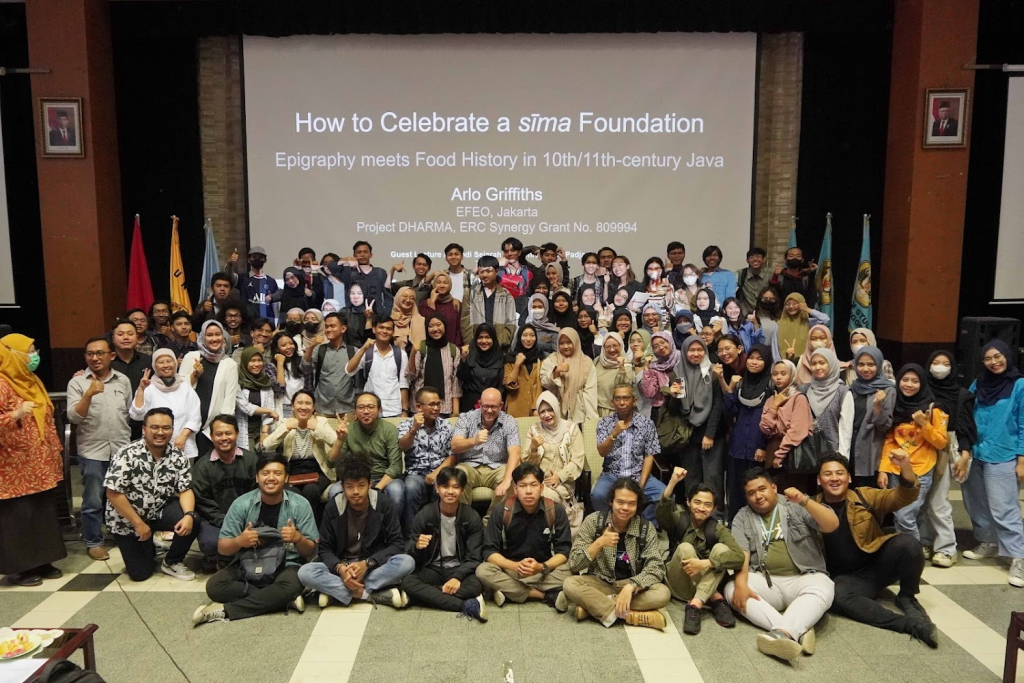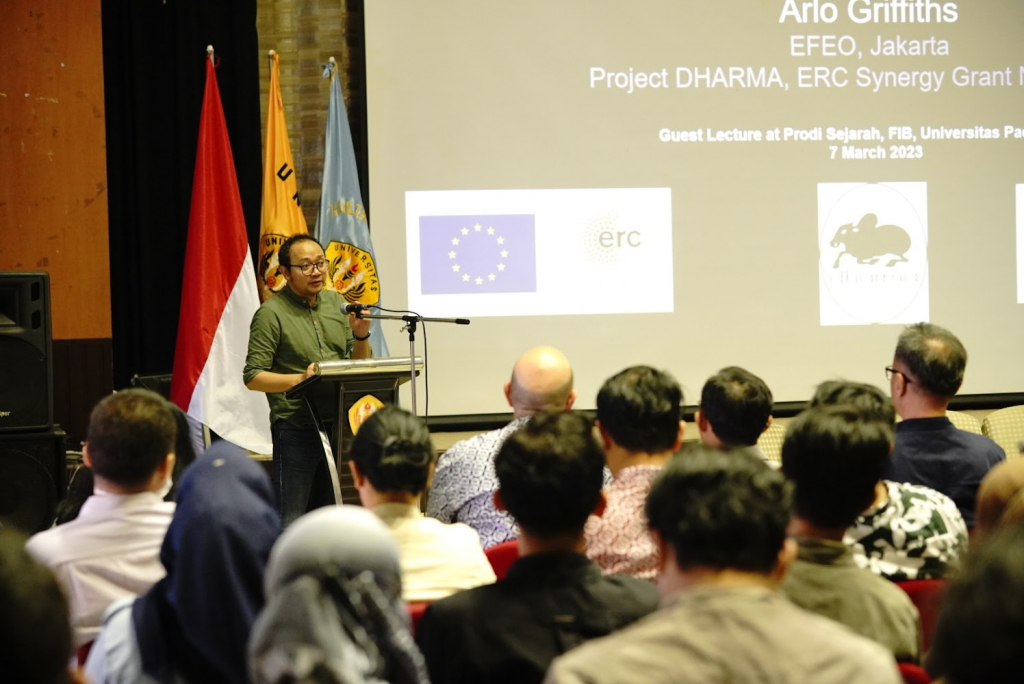
History Study Program Public Lecture “How to Celebrate a sīma Foundation Epigraphy meets Food History in 10th-century Java” with Prof. Dr. Arlo Griffiths
Universitas Padjadjaran History Study Program hosted a public lecture held at the PSBJ Hall, Faculty of Cultural Sciences. The activity brought in an expert, a guest lecturer named Prof. Dr. Arlo Griffiths who is a Professor of Southeast Asian History from the French Research Institute, Ecole Francaise D’Extreme-Orient (EFEO) and is moderated by Fadly Rahman, M.A (history lecturer). The public lecture which began at 10.00 WIB was officially opened by the dean of the Faculty of Cultural Sciences, Prof. Aquarini Priyatna, M.A., M.Hum., PhD and attended by lecturers of the History Study Program.
In giving his presentation entitled “How to Celebrate a sīma Foundation Epigraphy meets Food History in 10th-century Java” Prof. Arlo explained various findings about culinary matters in ancient Javanese society, especially in the X century AD. He obtained these findings from various sources, including: Temple Reliefs, Inscriptions and Inscription Slabs. Some of them are found in the Borobudur Temple Relief. In addition, the same findings are also found in inscriptions, including the Paradah I, Sangguran, and Masahar inscriptions. As for the Inscription Slabs, some of them are contained in the Anjatan, Anglayang, and Alasantan Inscription Slabs. In these sources, it was found that not only culinary dishes were found, but also food processing techniques, various dishes, flavors, various spices to cooking utensils used by the ancient Javanese community. Some of the culinary dishes that were widely eaten by the ancient Javanese community included fish dishes, such as Beong, Gurame, Gabus and Peda. It also includes vegetables and meat. Meanwhile for the common snacks, there are dodol and rice flour cakes. Furthermore, seasonings such as salt, onions, shrimp paste, candlenut, and galangal also became the main commodities in the seasoning of ancient Javanese cuisine. “This is proof that the treasures of Indonesian culinary art are old, special, distinctive, and rich,” he said. The public lecture ended with a discussion session and finished at 12.00. The presentation was ended by a plaque given by the Head of History Study Program, Dr. Miftahul Falah, M.Hum. to Prof. Arlo.
Writer: FIB Media Team
Translator: Firda Khoirunnisa














